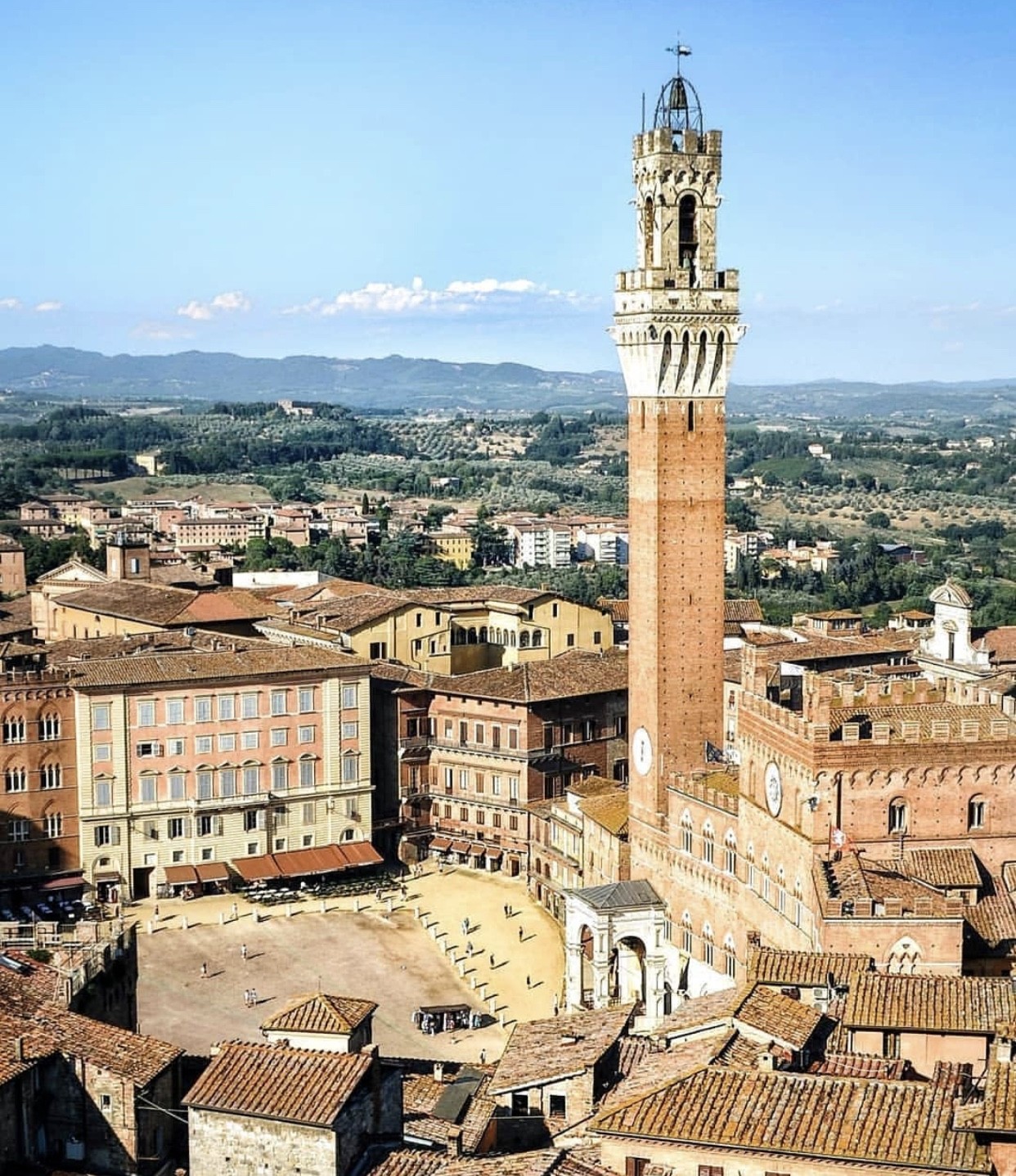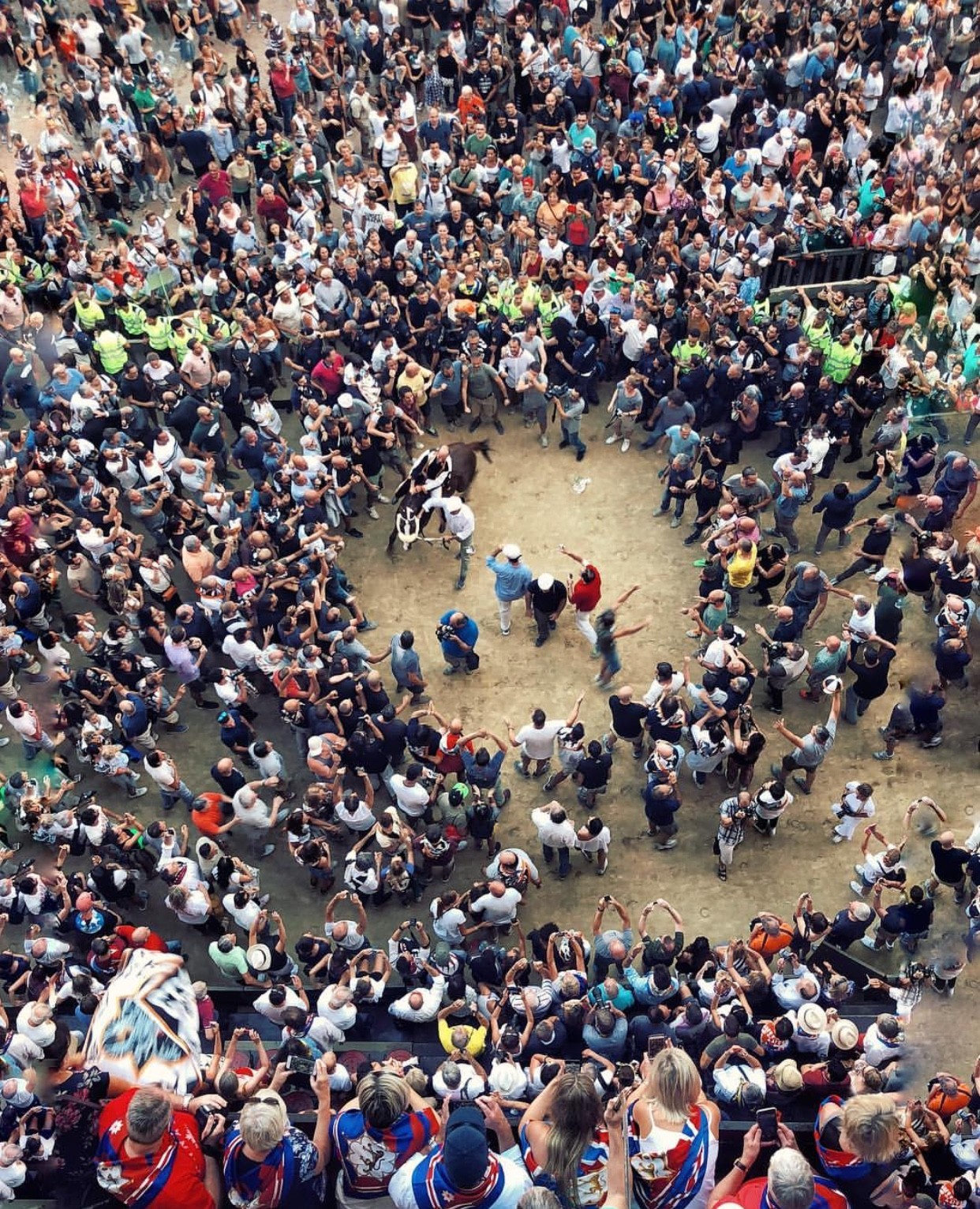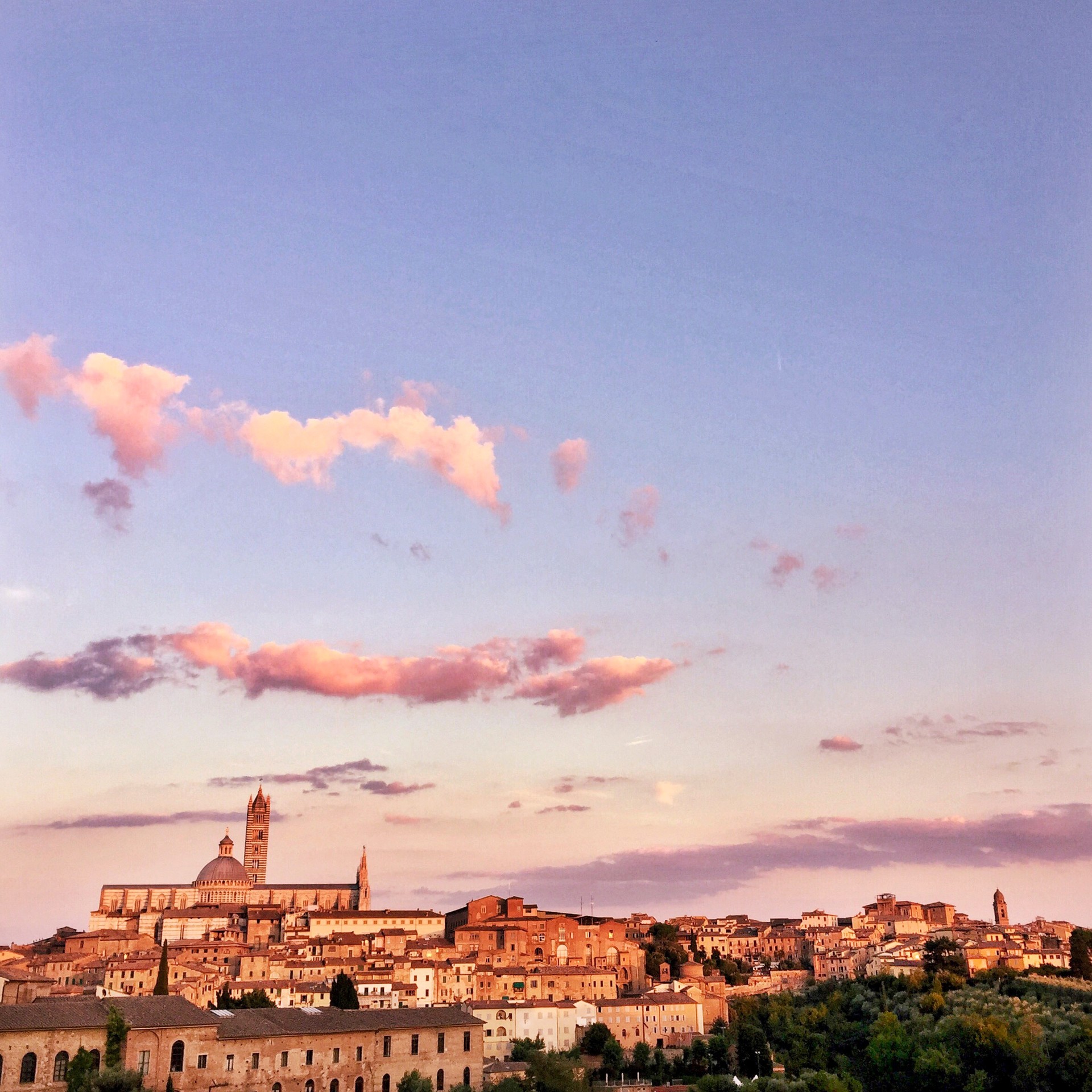The Palio of Siena
Siena's Palio
Siena, my birth city in the centre of Tuscany, is known around the world for two reasons: its medieval monuments and its Palio.
The Palio is by far the most famous celebration in the city, able to bring together all the Sienese to the main square, Piazza del Campo.

The Palio is in fact a horse race, with each horse belonging to a contrada (district), which generally takes place twice a year: on 2nd July, in honour of the Madonna di Provenzano, and on 16th August, in honour of the Madonna Assunta. Sometimes it happens that a so-called "extraordinary Palio" takes place, to celebrate particular dates (which is what happened in October 2018 to celebrate 100 years since the end of the First World War).
The Palio of Siena: the history
The Palio is a tradition that originates from the medieval ages and is still now the most important celebration of the year for all Sienese. Furthermore, it attracts several thousand tourists each year, who flock to Piazza del Campo to participate in a tradition that is so ancient, but at the same time so heartfelt and exciting.
The first written testimony concerning the Palio dates back to 1663.
From then on, the Palio was regularly run every year, except for the periods during the two World Wars. Despite this, despite not being able to celebrate real posts, the Sienese managed to make do even during the wars to not to abandon their most famous and important tradition.
In fact, curiously, it is said that they organised their Palio in August 1943 on a fictitious Piazza del Campo traced on the sand, pretending to be horses themselves, and that cardboard sponges were the contradas.
At the end of the war the lives of the Sienese resumed as before, and they also recovered to run the Palio with the usual annual timings. The stormy period that the city lived through without a Palio, and the Sienese will to not abandon the old traditions to which they were so attached, convinced the Mayor to run an extraordinary Palio. It was held on 20 August 1945 and went down in history with the name of "Palio della Pace" ("Palio of Peace").
The Palio of Siena: the contradas
Each of the seventeen contradas of Siena represents a set area of the city. The contradas of the Palio of Siena are the following 17:
- Bruco (caterpillar)
- Aquila (eagle)
- Drago (dragon)
- Istrice (porcupine)
- Chiocciola (snail)
- Lupa (she-wolf)
- Civetta (owl)
- Leocorno (unicorn)
- Giraffa (giraffe)
- Onda (wave)
- Nicchio (seashell)
- Oca (goose)
- Selva (woods)
- Pantera (panther)
- Valdimontone (ram)
- Tartuca (tortoise)
- Torre (tower)
Each of them represents a specific neighbourhood of the historical part of Siena. Each contrada has its own perfect organisation, its own government and a general assembly that chooses its leaders, that is, the people who administer and represent it publicly.

The current organisational structure of the contradas, incredibly, dates back to 1729.
The origins of the contradas in themselves, however, traces back to the year one thousand, when small associations where born in Siena, which offered services to pilgrims going to Rome along the Via Francigena.
The Palio of Siena: organisation of the race
During the race, each contrada is represented by a horse and a jockey. In reality, the true representative of the contrada is more than anything to do with the horse, since it can win the Palio even when "shaken", that means without having the rider on its back, which is not a rare incident at all.
The horses that run in the Palio are assigned to the contradas at random. The assignment takes place a few days before the race and this means that the contradas must decide quickly which strategy to adopt and therefore which one the jockey will use.
As a matter of fact, if the horses are assigned to the contradas randomly, the same thing does not happen with the choice of the jockeys, which are chosen on the basis of their characteristics. The jockeys are paid large amounts by the contradas they race for, but since everything is allowed in the Palio, there are no rules that forbid them from being "corrupt", or receiving more money from the jockeys and other contradas.

Among the tasks of the contrada managers, the management of the race is one of the most important. Every year, they take care of the engagement of the jockeys and study the best strategies in anticipation of the events that could occur during the race. Among other things, it is not at all uncommon for jockeys to corrupt opponents to damage a rival, in case there is little chance of victory, or even (obviously at their own risk and peril) to make the contrada that hired them lose.
Often, talking of Palios, it is thought that these relate exclusively to the two dates (2nd July and 16th August) of the race, but this is not the case. In reality, it begins four days earlier, with the so-called "tratta" ("trade"), or the extraction, and the subsequent matching of the various horses with the various contradas. The mayor and the captains of the ten contradas that take part in the race. Interestingly, not all seventeen will participate but instead only the seven who did not participate in the Palio of the previous year and then three drawn at random.
As for the two days of the actual challenge, the day is entirely dedicated to events related to the race, which concludes it. At 8am the "mass of the jockey" is performed in the chapel of the Torre del Mangia, a very ancient and characteristic monument that stands out above the Piazza del Campo. At nine o'clock the so-called "provaccia" is held, the last test, not very frequented because the jockeys, in order not to tire their horses, never go very fast and, consequently, the whole atmosphere is not the same as that of the real Palio.
The race
Around two o'clock in the afternoon, the blessing of the horse takes place and the historical procession begins, arriving in the square around five o'clock in the afternoon. Once the procession is over, around seven o'clock (the times depend on the month of the year, at the Palio of August everything takes place slightly earlier, and lasts for as long as the sunlight lasts). After the final parade, the various jockeys come out of the entrance, riding their horses and they set off towards the "move", the place where the horses will start. At this point, the mossiere (starter of the race) receives a letter in a sealed envelope from a traffic policeman that only he can read, in which there is the order of alignment of the horses to the canape (the two ropes that delimit the area the horses start from). In this way, the contradas are called to the canopy according to the already established order. Only one of the ten contradas, that of "run-up", will have to settle behind, in the second canape and enter only when all nine are well aligned. The entry order is a determining factor for the outcome of the race: a good start can heavily influence the Palio and it is for this reason that often the tactic the jockeys use is to try to hinder the jockeys of the enemy contrada, or try to benefit themselves. For this reason, the move, or the beginning of the procedure is often very long. The longer the move, the more the animals get stressed and become difficult to control.

In some cases it may last past the evening, so the mossiere is forced to postpone the palio to the next day. Normally, this doesn't happen, and if the jockeys maintain a good alignment, then the procedure is valid. Immediately after the horses depart, the contested mossiere is taken out for security reasons. Only then do the three laps begin, which will lead to the victory of a horse with or without a jockey (a "shaken" horse). At the end of the race, the winning contenders come to collect the much desired prize, Il Drappellone.
The atmosphere in the Piazza during the hours before the race itself and in the moments that follow it is filled with tension.

The whole square is invaded by tourists, wanting to attend an event as ancient and spectacular as this, but there are still even more people from Siena itself, which is why the days following the Palio are by far the most important of the year. It is a celebration in which all the members of the contradas participate, from children to the elderly. Indeed, the structure and organisation of the contradas makes it possible to start taking part in the events connected to them from an early age. These "events" aren't only held during the days around the Palio, but continue throughout the rest of the year. They may include exhibitions, conferences, bingo, parties and sports tournaments.
Entertainment in the contradas
The contradas are there own meeting places, where lunches and dinners are served for all members and where, on specific dates during the year, parties are held to which all are invited.
Throughout the summer the people of Siena rotate around the events organised by the contradas. Among these the most important are the "Bao Bello" in Bruco (in the month of June), the "Pania" in Nicchio (at the beginning of August), the "Mangia e bevi" (July) in Torre and the "Braciere" in the Istrice Contrada (in September). They are huge parties, that begin with dinners made from homemade products and with lots of wine, and that end with music at full volume in the open clubs.
In order to be officially called "contradaiolo" (to be officially part of a contrada/ district) it is necessary to be baptised in one of the seventeen contradas of Siena. The baptism ceremony is presided over by the main authority of the contrada, which is the Prior, who baptises "contradaiolo a vita" (contrada for life), using the water that flows from the fountain of the district and reciting specific and solemn words.
I am probably quite a unique case in Siena, because I don't belong to any contrada.

Although I don't care about the competition itself (and I don't approve of the violence that sometimes revolves around it), I recognise that it is a unique and spectacular tradition that is worth preserving.
Did you know that the Palio of Siena corresponds directly with the Ferragosto holiday and its origins? If you'd like to find out more, read this article about Ferragosto: how to prepare for the best holiday of summer, also and above all for when you don't have any idea what to do this year.
Photo gallery
Content available in other languages
- Italiano: Il Palio di Siena
- Polski: Palio w Sienie
- Español: El Palio de Siena
Share your Erasmus Experience in Siena!
If you know Siena as native, traveler or as exchange student... share your opinion on Siena! Rate different characteristics and share your experience.
Add experience →





















Comments (0 comments)